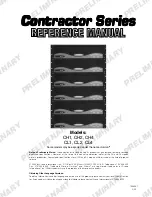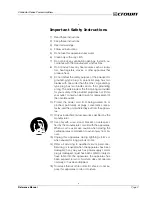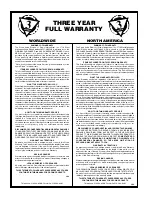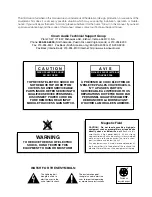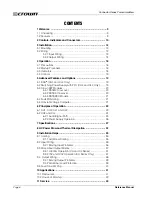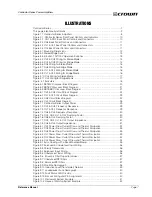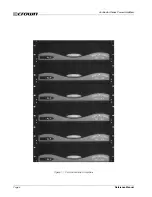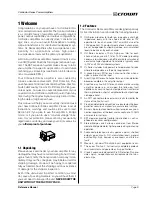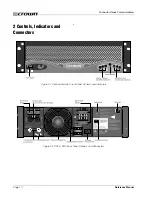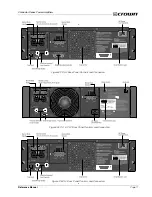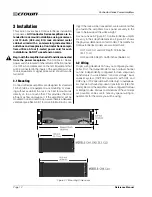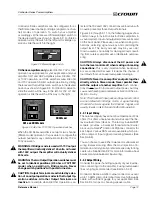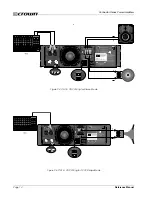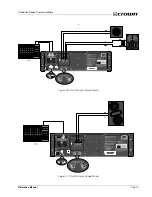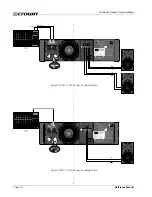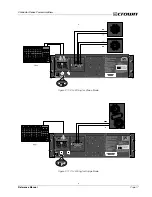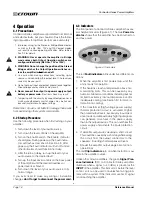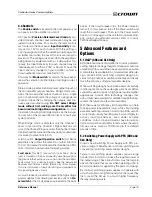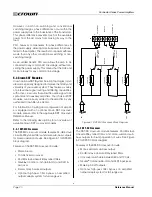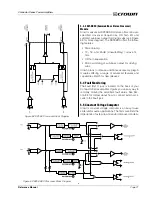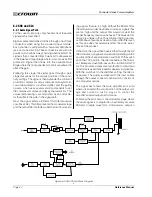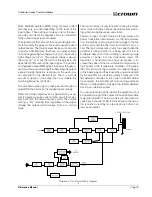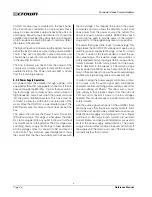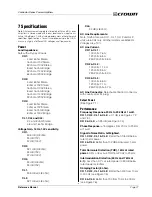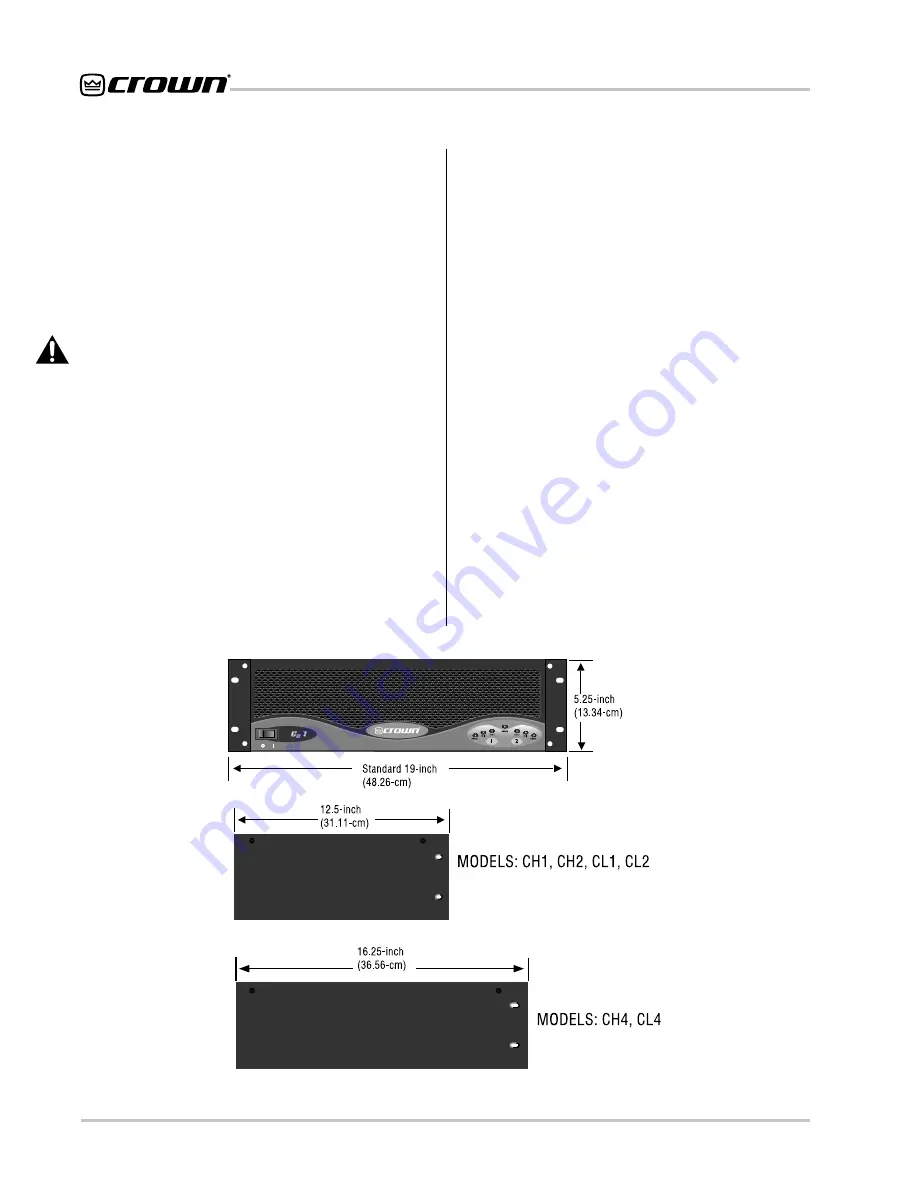
Page 12
Contractor Series Power Amplifiers
Reference Manual
3 Installation
This section covers basic Contractor Series installation
procedures.
All Contractor Series
amplifiers are in-
tended for rack mount installations using a commer-
cial 19-inch (48.3-cm) EIA rack standard metal
cabinet wired with a commercial grade electrical
outlet box and receptacles. Contractor Series ampli-
fiers utilize a 3-foot (1-meter) power cord for such
installations. Do NOT use extension cords.
Begin with the amplifier turned off and disconnected
from the power receptacle.
The Contractor Series
power switch is located on the left side of the front panel;
it is OFF when depressed on the left. Equipment that
will be connected to the inputs of the amplifier (such as
mixers,equalizers or signal processors) should also be
turned off.
3.1 Mounting
Contractor Series amplifiers are designed for standard
19-inch (48.3-cm) equipment rack mounting, or stack-
ing without a cabinet. In a rack, it is best to mount units
directly on top of each other. This provides the most
efficient air flow and support. If the amplifier(s) will be
mounted in an enclosed rack, assure there is adequate
ventilation (see Section 9.1 for more information on cool-
Figure 3.1 Mounting Dimensions
ing). If the rack will be transported, we recommend that
you fasten the amplifier’s back panel securely to the
rack to help support the unit’s weight.
As you can see in Figure 3.1, Contractor Series amplifi-
ers vary in their depth demensions. Figure 3.1 shows
the physical demensions of all models. The depths for
Contractor Series models are also listed here:
CH1, CH2, CL1 and CL2 Depth: 12.5 inches
(31.11 cm)
CH4 and CL4 Depth: 16.25 inches (36.56 cm)
3.2 Wiring
Proper wiring depends on how you configure your am-
plifier. First, the Output Mode for each output channel
can be independently configured to drive step-down
transformers in a distributed “constant voltage” loud-
speaker system (70V/100V operation with CH1 and
CH2 only, or 70V operation with CH4 only) or loudspeak-
ers that do not have step-down transformers (4/8 ohm
mode). Second, the amplifier can be configured for Dual
or Bridge modes. Various combinations of these modes
are possible, so be sure to note any special wiring re-
quirements for the mode you will be using.

